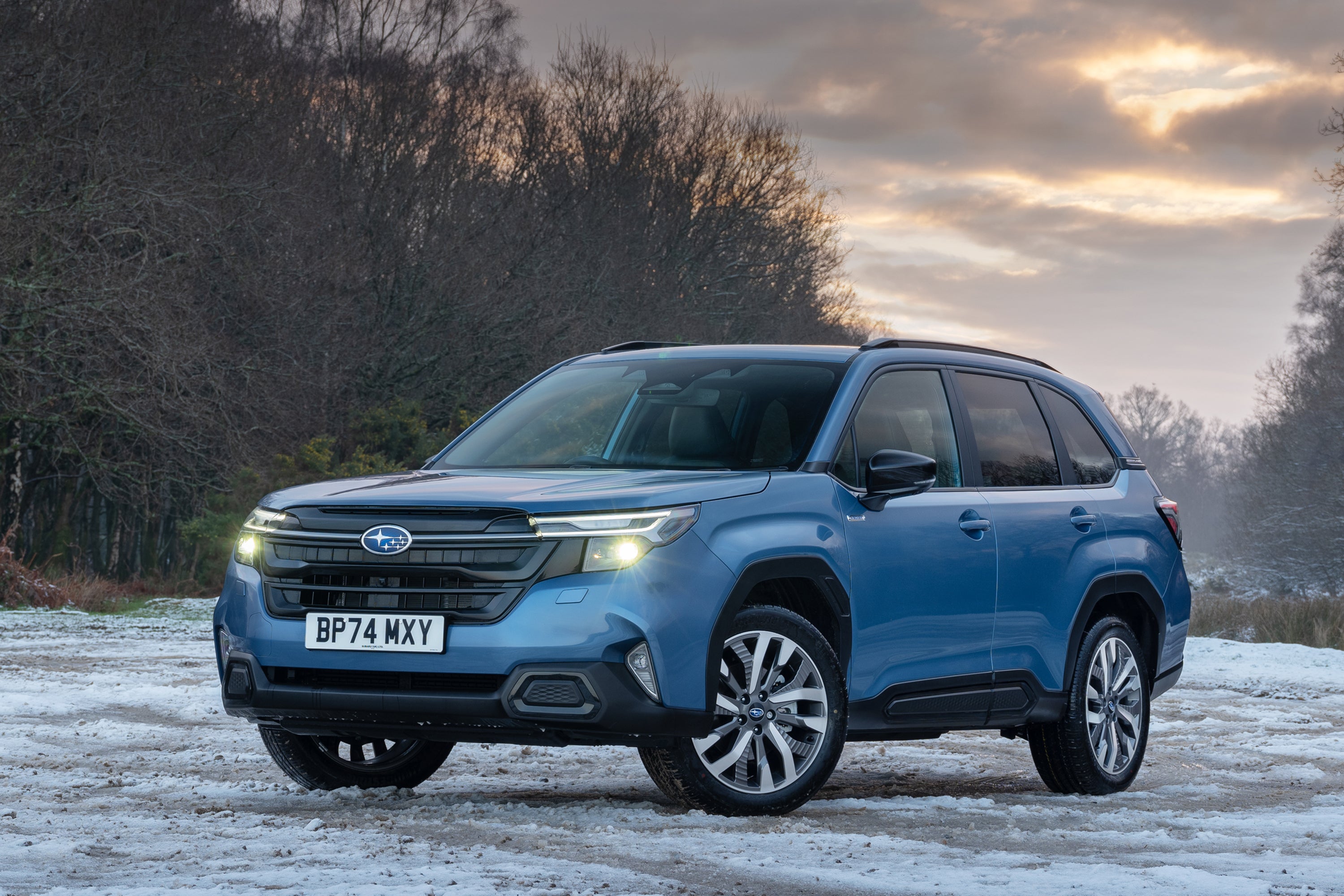Subaru Forester Review 2025: Price, specs & boot space
Written by Matt Robinson
Quick overview
Pros
- Interior much smarter than before
- Top spec model only a small jump in price
- Something a bit different
Cons
- Still dated inside
- Thirsty engine
- Safety tech can get annoying
Overall verdict on the Subaru Forester
"The Subaru Legacy is noticeably improved and a very likeable car, but it lags behind rivals in quite a few areas. Much like its predecessor, we're not expecting it to be a big seller."
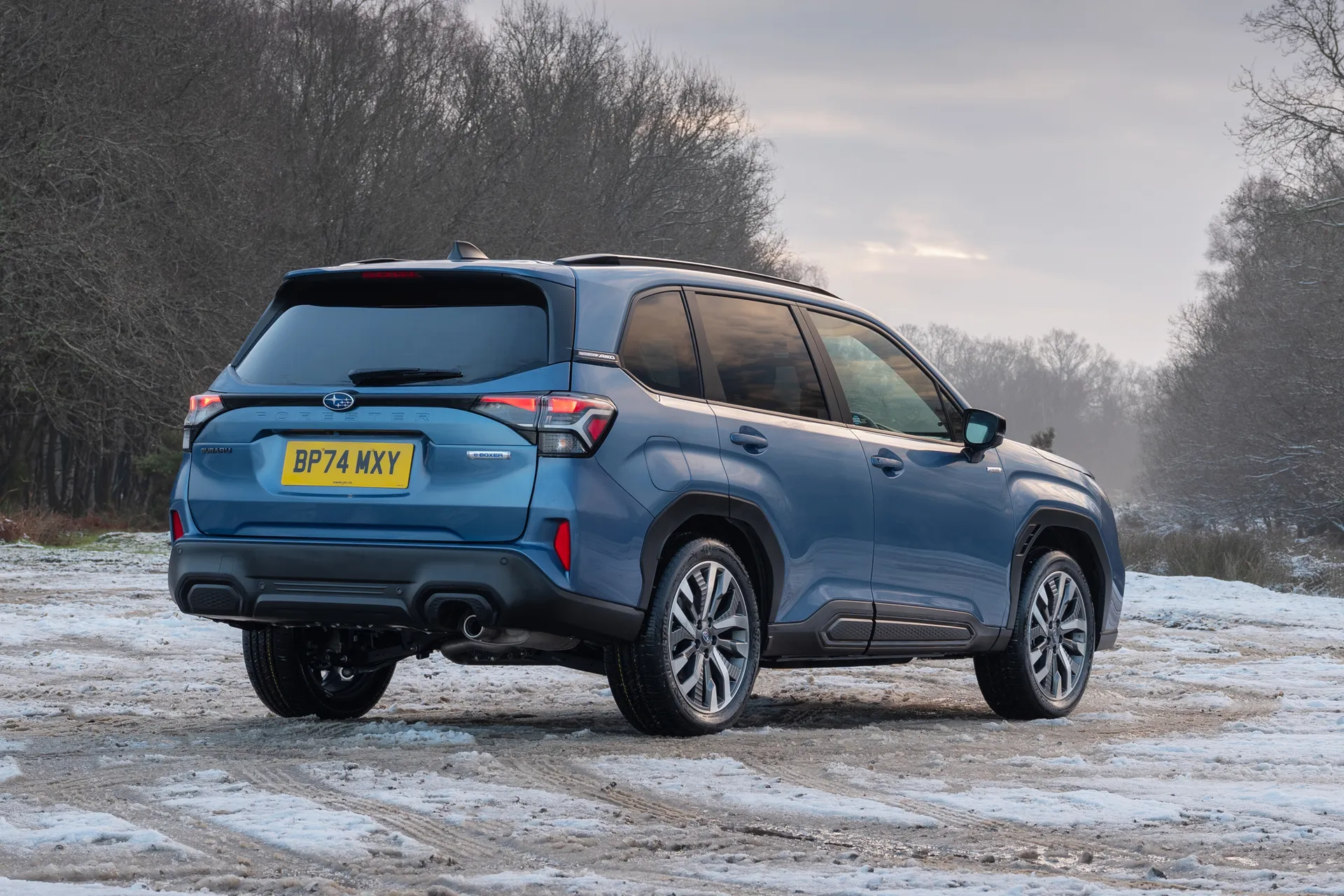
It's not easy to stand out amidst the hoard of mid-size SUVs, but the Subaru Forester manages it. The badge alone does that - the brand typically sells less only around 2,500 cars a year in the UK, so a Subaru of any kind is a rare sight here.
What's more, it has a 'proper' permanent all-wheel drive system where most competitors are either front-wheel drive or have a 'part-time' system, which is why Subaru's most loyal customers can generally be found in rural areas. And finally, these cars use what's known as a 'boxer' engine.
But does the Forester offer anything from being a bit quirky? To find out we've driven the heavily updated version which Subaru is referring to an all-new generation (the model's sixth), although there are quite a few carryover components. Unusually, we were given the opportunity to drive the new car back to back with the outgoing model, which was particularly revealing.
Changes to the new car include a restyled front with a larger grille and slimmer headlights, a new look for the rear, a drastically overhauled cabin with a significantly larger infotainment system and even a lower window line for a better view out. The 2.0-litre engine has been carried over, as has the continuously variable transmission (CVT).
It's a noticeable step on from the outgoing model, but it's likely to remain a niche choice since the Forester still feels dated and is too thirsty. It's decent value, though.
Is the Subaru Forester right for you?
Unless you're hell bent on having something a bit different and/or want permanent all-wheel drive, you'll be better served with one of the Forester's many rivals. All that being said, we can't help but appreciate it for not running with the pack, and generally being quite charming.
What's the best Subaru Forester model/engine to choose?
There’s not a lot of choice to make, here. The Forester is only available with one engine, a 2.0-litre ‘boxer’ four-cylinder turbo petrol mild hybrid. Since there’s not a lot of price difference between the entry-level Limited trim grade and the range-topping Touring, we’d recommend opting for the latter.
What other cars are similar to the Subaru Forester?
There isn’t really anything truly similar to the Forester, with its unusual engine configuration and ‘proper’ all-wheel drive system making it a unique proposition. That said, there are plenty of more conventional mid to large-sized SUVs vying for your cash.
All versions of the Forester hover around the £40,000 mark, which pits the vehicle against the likes of the Skoda Kodiaq and Volkswagen Tiguan, higher spec versions of the Mazda CX-5 and Kia Sportage, plus lower spec trims of more premium SUVs like the Mercedes GLB and Volvo XC60.
All of the Forester’s cheaper competitors have optional all-wheel drive systems, though, and as Subaru is particularly keen to point out, this makes the Forester the cheapest option in the segment with driven wheels at both ends of the car. Whether or not you need that is another matter, of course.
Comfort and design: Subaru Forester interior
"Although it's a big step on from the old Forester, the cabin of the new one still feels dated compared to competitors. In some ways that's not so bad, though."
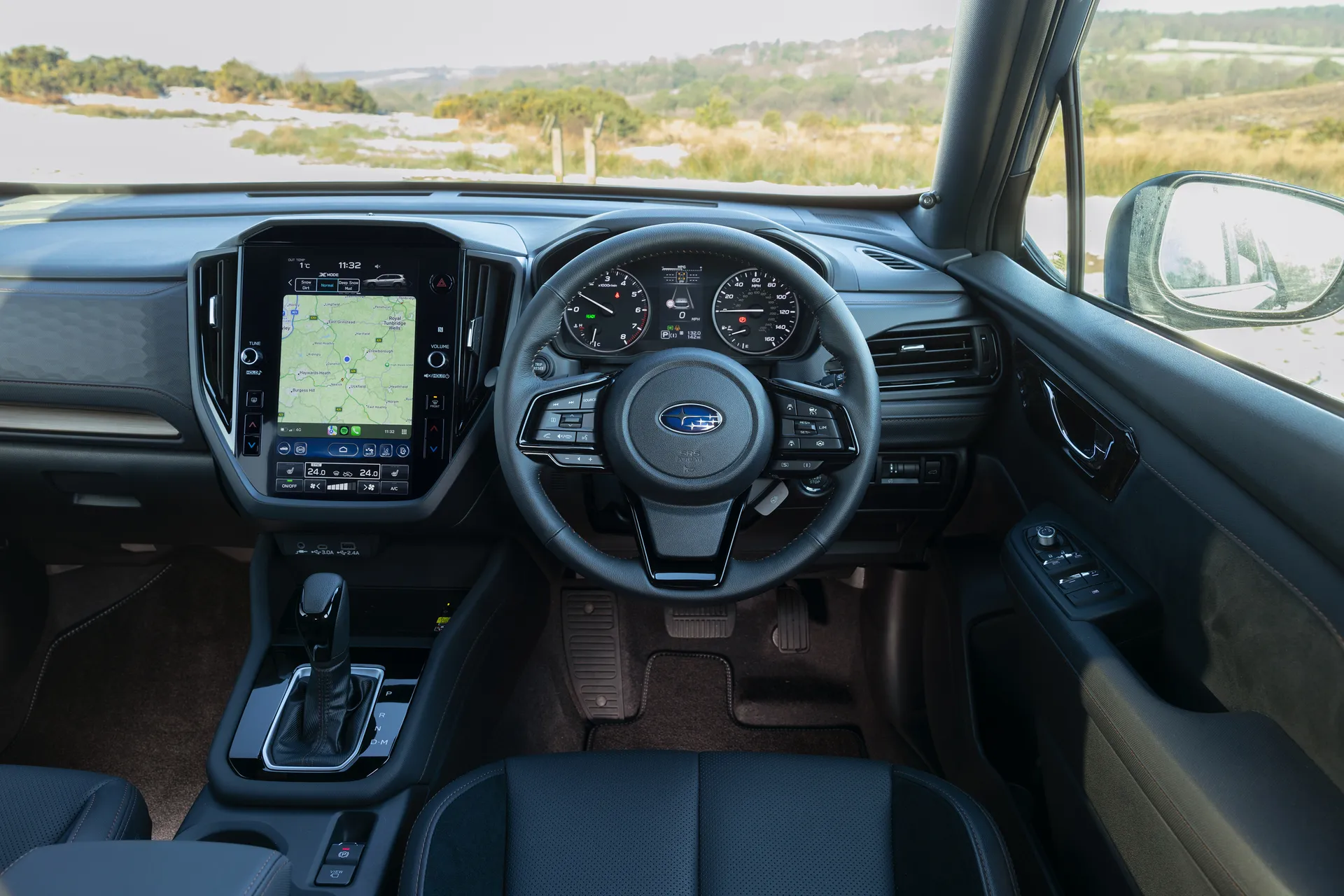
And by that, we mean the presence of physical dials. Although some might find this a bit old hat compared to the fancy digital instrument clusters that are now the norm, others might find this 'old fashioned' look quite charming. The colour TFT betweent the two isn't big, though.
This is at least made up for by a considerably larger infotainment screen than before, but the cabin does still have the feeling of something launched about 10 years ago with its use of materials. Nothing feels cheap, at least - this is a car that should wear the miles well.
Subaru has also overhauled the seats, which we're told provide a 44% reduction in head sway. We can't say that's ever something we've been particularly concerned with, but the seats do certainly prove very comfortable.
Quality and finish
The Forester feels well built inside and as though it'd wear the miles well, and given the rural lives a lot of these cars will experience, those will be tough-going miles. We have no grumbles about the quality, and nothing feels cheap, but it's not an especially premium-feeling cabin either. This segment has left the Forester behind in terms of luxury.
Infotainment: Touchscreen, USB, nav and stereo in the Subaru Forester
The Forester's infotainment touchscreen has grown considerably with the 2025 model, which gets a massive 11.6-inch portrait display with a resolution of 1920x1080. Unfortunately, some of the physical climate controls have been 'absorbed' by the screen, though they are displayed permanently along the bottom, and there are proper buttons controlling the temperature of the climate zones flanking the display.
The screen is reasonably responsive and easy enough to navigate, but its graphics a little dreary and old-fashioned looking. And speaking of old fashioned, it gets an aux input, which might have been a feature worth talking about in 2007. Choice is king, it seems, as along with the jack input, there are also USB sockets of the Type-C and Type-A varieties - of of each in the front, and one of each in the back.
The inbuilt navigation works just fine, but again, it's not the most modern looking. You'd be better off using the included Apple CarPlay or Android Auto connectivity and beaming your preferred navigation app onto the screen.
Space and practicality: Subaru Forester boot space
There's plenty of headroom inside the Forester for both front and rear occupants, and legroom in the rear is decent. In terms of boot space, you get 508 litres with all seats in place, which is decent, but some way behind some rivals like the Skoda Kodiaq, which has a whopping 910 litres in its five-seater configuration.
Drop the rear bench in the Forester, and the figure increases to 1,720 litres. Headroom under the boot has also been increased by 30mm, so you should be less likely to whack your head when loading things in there. Also making life easier is a powered tailgate you can open by waving your foot under the rear bumper on all but the entry-level Forester trim grade.
Handling and ride quality: What is the Subaru Forester like to drive?
"The Subaru Forester sets itself apart from rivals in the way it drives, with tidy handling, sweet steering and all-wheel drive security. This does make you wish there was a quicker one, though."
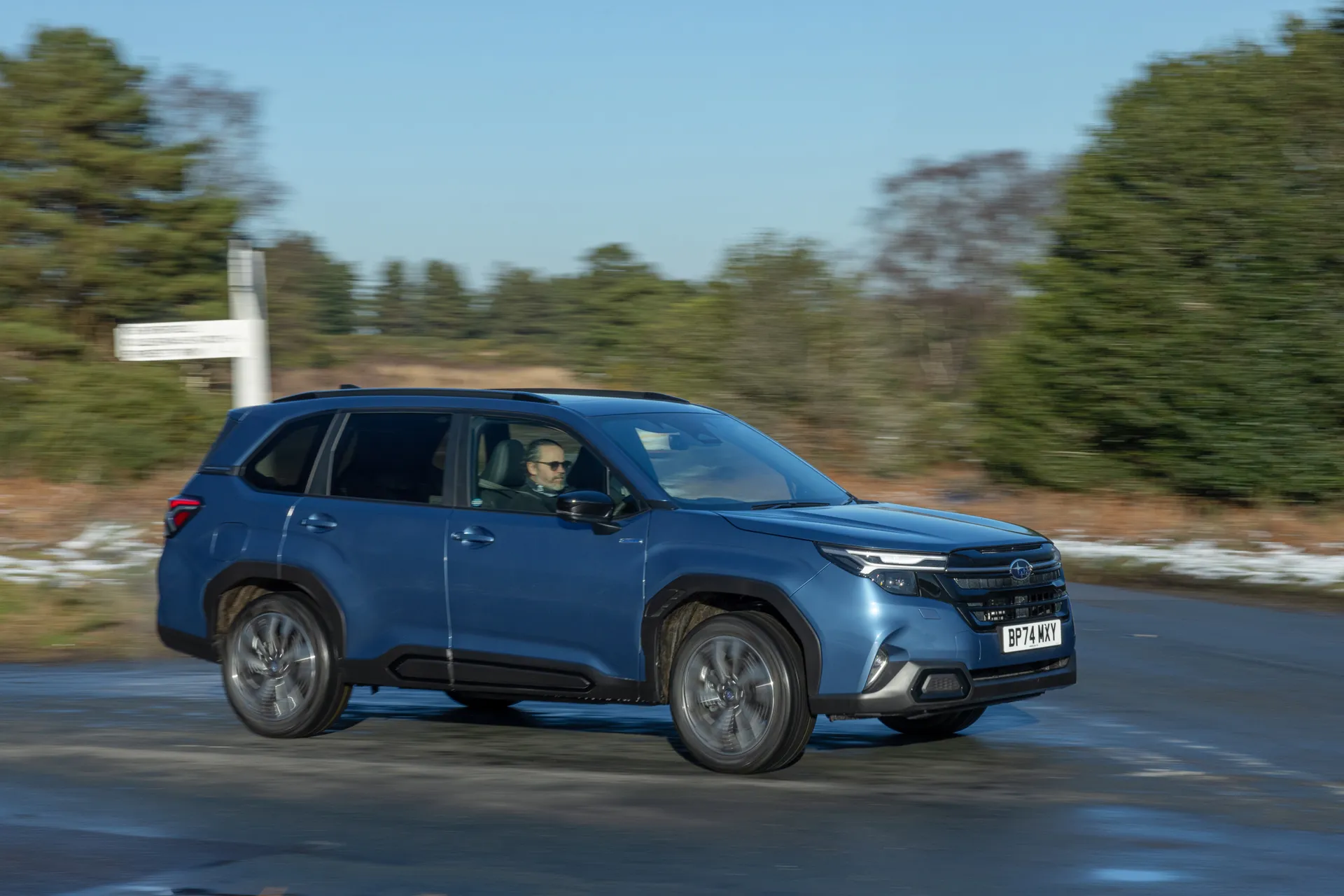
Dynamically, the Subaru Forester is really nicely sorted. The ride is smooth and does a great job of soaking up imperfections in the road surface, striking a commendable balance between comfort and composure. There is some body roll, but the Forester never feels like it’s going to tip over onto its door handles. At the same time, it’s not pointlessly firm as we see with a lot of SUVs around this kind of money.
The steering merely sweetens the deal. It feels direct, about the right speed and is well-weighted. Meanwhile, traction from the all-wheel drive system is excellent even in the greasy conditions we experienced on the day of the car's launch. It all makes you wish Subaru still offered more powerful versions of the Forester.
Along with being surprisingly satisfying to drive on a twisty road, the Forester is also relaxing to punt around in during urban driving and on motorway cruises, helped by the increased refinement in the latest model - more on that shortly.
You might clock that the engine isn't a four-cylinder arranged in the usual inline manner if you're a bit of a car geek, as it does sound a little bit different. Otherwise, you're unlikely to notice or care, but either way, you might be wanting for a bit more performance. A 16bhp uplift from a small electric motor brings the total system power to 148bhp, which isn't stellar for a vehicle weighing over 1,700kg.
As such, the 0-62mph time is a leisurely 11.8 seconds. The Forester feels a bit quicker than that number would suggest, though. Granted, it never feels fast, but it doesn't feel unduly sluggish either. The boost at low revs from the motor likely helps in this regard, as will the responsiveness of the CVT.
If you've never driven a car with a CVT, the Forester might feel strange. Putting your foot down results in the car revving high and staying there for some time, so it's a good job Subaru has improved the soundproofing. It's a reasonably well-resolved transmission, but it's not quite as slick as similar setups from Honda and Toyota.
Thanks to the presence of permanent all-wheel drive coupled with a healthy 220mm of ground clearance, the Forester should do well for itself off-road, although we've only tested it on solid ground so far.
What engines and gearboxes are available in the Subaru Forester?
There's only one combination on offer - a 2.0-litre 'e-Boxer' with a continuously variable transmission (CVT). A boxer engine is also known as a flat four or 'horizontally opposed' engine, with the pistons moving in opposite directions to each other, like a boxer punching. Sort of. It's a rare configuration - only Porsche makes engines like this, and although the Toyota GR86 has a boxer four, it's made by...Subaru.
On that subject, the CVT is also an atypical kind of gearbox, although it's a more common offering than the boxer engine it's fitted to, with Honda and Toyota selling many cars arranged thusly. It's technically an automatic gearbox, although there aren't any 'gears', just one 'speed' which is able to continuously change its ratios, hence the 'continuously variable' bit.
Refinement and noise levels
This is where the current Forester is most noticeably different from the outgoing model. Where the engine in that car would seem particularly vocal at high revs, it's much more hushed this time around, while wind and road noise have been dialed back to much more acceptable levels as well. Subaru claims to have reduced cain noise by 39%, and those are claims we readily believe.
Safety equipment: How safe is the Subaru Forester?
The Subaru Forester was assessed by Euro NCAP at the end of 2024, and did very well for itself, earning the maximum five stars in its overall rating. Breaking down into the individual categories, it managed 83% for adult occupants, 89% for child occupants, 86% for vulnerable road users and 72% for its safety assist systems.
The Forester also gets a rejigged version of Subaru's EyeSight driving assistance suite, working out of new front and rear wide-angle cameras. Along with all the usual suspects like lane assistance and traffic sign recognition, there's also a new Emergency Driving Stop System that safely brings the car to a stop should the driver become incapacitated through a medial emergency.
The systems could do with some polishing, though, with a few erroneous warnings cropping up during our drive, especially for the driver attention monitor.
MPG and fuel costs: What does a Subaru Forester cost to run?
"Don't buy a Subaru Forester if you're expecting frugality, as you'll be sorely disappointed."
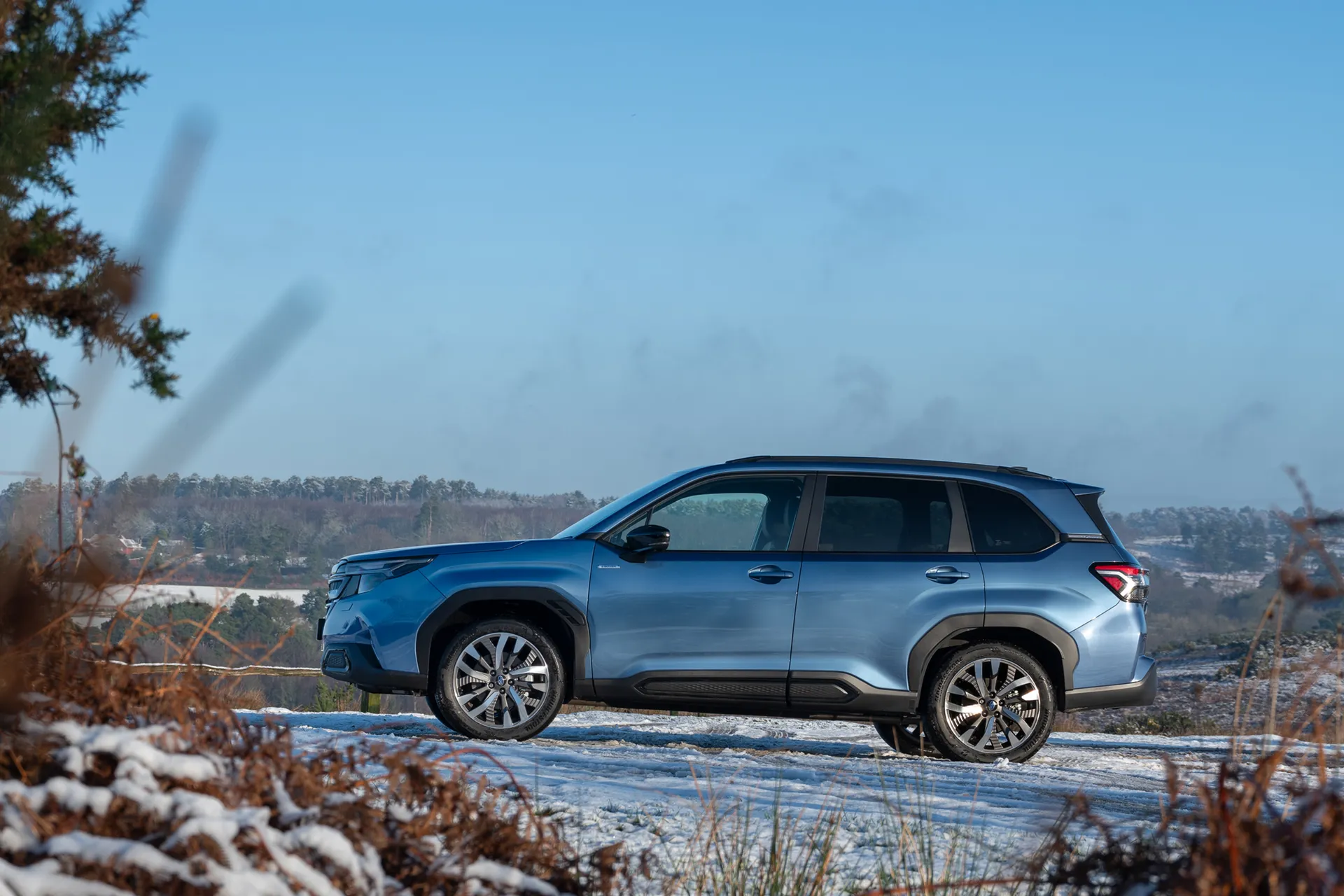
Like the outgoing Forester, the current one isn't even able to crack 35mpg, with an official figure of 34.7. That's quite poor these days, with the Subaru lagging behind rivals with a far more modest appetite for unleaded.
Sadly, this is very much reflected in real-world driving situations. During the launch, we saw the MPG drop as low as 13mpg (admittedly while testing the performance on a particularly enjoyable bit of road), with the average in the end coming in at 17.8mpg. It probably doesn't help that due to the car's modest power and torque figures, you need to put your foot down to make decent progress.
Subaru Forester reliability and warranty
Being a new car on a reasonably fresh platform, it's hard to say how reliable the Forester will prove, but its engine, gearbox and all-wheel drive system are well proven. Plus, the few Subaru buyers out there are generally very happy with their purchases, with the brand as a whole and its products usually placing well in the HonestJohn.co.uk satisfaction index.
Subaru Forester insurance groups and costs
Insurance groups for the Forester haven't yet been confirmed, but we're not anticipating any big changes from the outgoing model, which is in group 23.
VED car tax: What is the annual road tax on a Subaru Forester?
As an alternative fueled vehicle, the Forester is subject to an annual vehicle tax or vehicle excise duty (VED) of £180. Only the entry-level version escapes the government's premium car tax - all other derivatives are liable for an additional annual £410 charge from years two to five of ownership.
Subaru Forester price
"Subaru Forester starts from £38,995, but unusually for the segment, the price range between trim grades is fairly small."
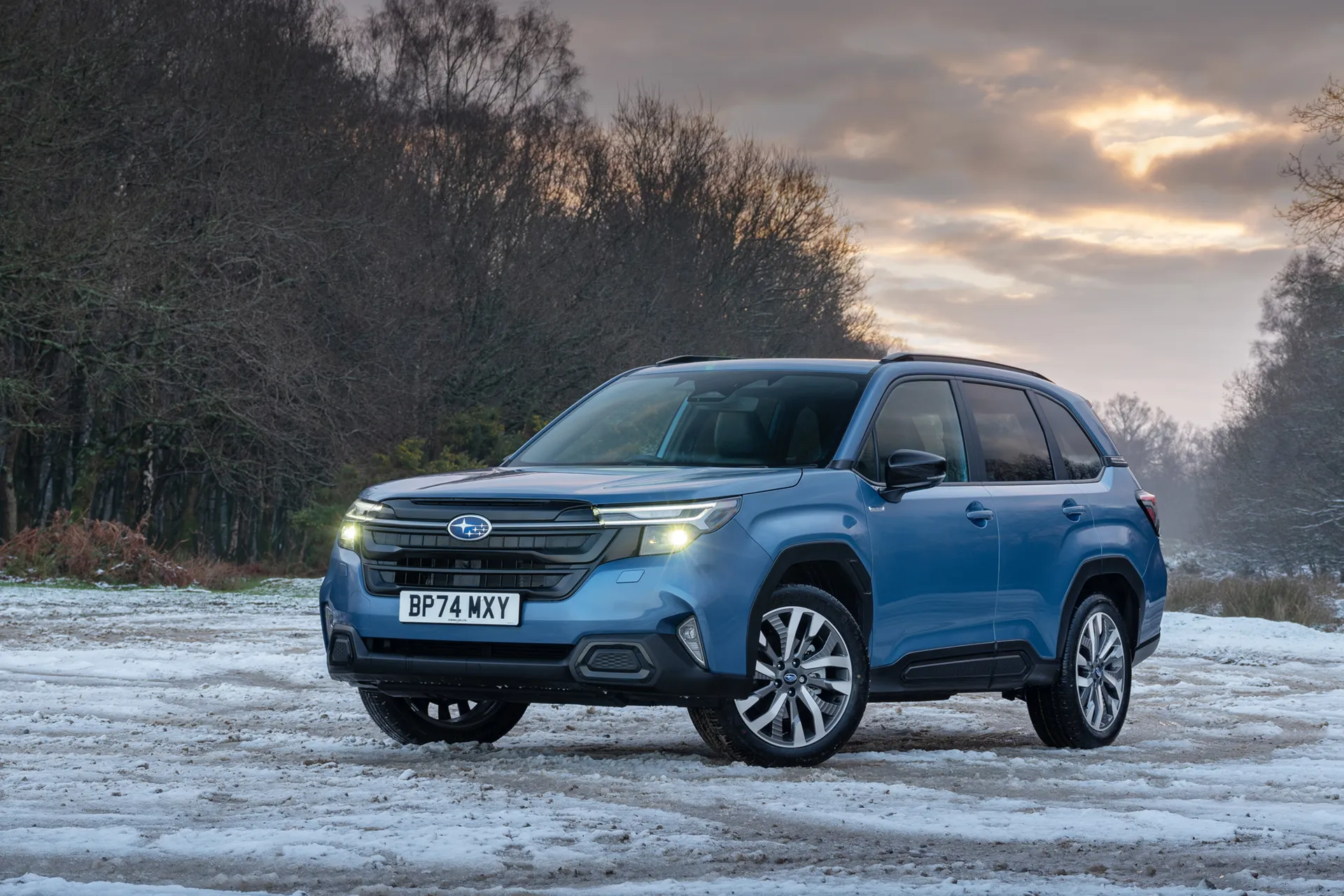
If you'd prefer a little more equipment there's the Forester Field for £40,440, while the range-topping Touring is £42,995. That's quite a narrow band of pricing when you consider some rivals with more complicated engine/trim line-ups that can have as much as a £15,000 gulf between the cheapest and most expensive versions.
It'll be a little while before we see many used examples of the new Forester filtering through, and you'll never have a great deal of choice, since the model is such a slow seller in the UK. It could be a good time to get a pre-registered example of the outgoing model, with significant savings to be had on the few that are around.
Trim levels and standard equipment
The range starts with the £38,995 Forester Limited, which comes with Subaru's Eyesight 4.0 suite of safety systems we detailed earlier, plus 18-inch alloy wheels, a wireless smartphone charger, electrically adjustable and heated front seats with memory on the driver's side, wireless Apple CarPlay and Android Auto, and a 360-degree parking camera.
Opting for the mid-spec Field adds tinted windows, a heated steering wheel, a powered tailgate with a 'gesture' opening feature (activated by waving your foot under the rear bumper), and navigation. Finally, the top-spec Touring includes all of the above and adds 19-inch wheels, heated rear seats, an electric sunroof and black leather trim.
Ask the heycar experts: common questions
How much can the Subaru Forester tow?
Is the Subaru Forester a good car?
How much does the Subaru Forester cost?
Get our latest advice, news and offers
Keep me updated by email with the latest advice, news and offers from heycar.
By submitting you agree to our privacy policy
